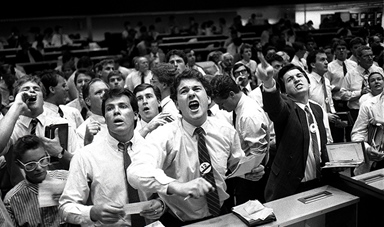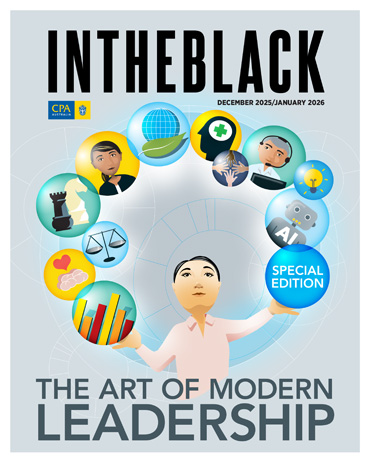Loading component...
At a glance
By James Dunn
This month, some investors get nervous: they think of the October stock market crashes of 1929, 1987 and 1997.
The 1929 crash stripped 25 per cent from the value of the US stock market in two days, on its way to a 90 per cent fall by 1932, and the Great Depression.
On Black Monday, 19 October 1987, US stocks plummeted 22.6 per cent and infected global markets the following day. Australian stocks fell 25 per cent on 20 October.
Ten years later, the Asian currency crisis, which started in July 1997, hit the US in October, knocking 11 per cent off the S&P 500 in four days and 10 per cent from Hong Kong’s Hang Seng Index in one day.
Australia’s stock market is trading above its long-term average
Share markets are usually valued on a price/earnings (P/E) ratio and, according to Shane Oliver, head of investment strategy and chief economist at AMP Capital, the Australian market has crept above its long-term average. On next year’s expected earnings, the Australian market is trading at 15.2 times expected earnings, versus its long-term average of 14.3. That’s not a scary number, he says
“Prior to the ‘tech wreck’ [March-April, 2000] the market was trading at 18.5 times expected earnings, and prior to the GFC [Global Financial Crisis] crash, it was trading at 16.5. In both situations the environment was one of much higher interest rates and bond yields. Given that those are much lower now, our market is significantly undervalued,” says Oliver.
US growth forecasts boost stock markets
The Australian market is trading at levels similar to Europe, Japan and the UK, explains Oliver, but below the world forward figure of 17.2 times expected earnings as measured by the MSCI World Index, a broad global equity benchmark. He notes that the world figure is skewed by the US market, which accounts for about 70 per cent of the index and is trading at 18 times expected earnings.
“The US has been a world outperformer for several years – the S&P 500 Index is up more than 80 per cent in the past five years – and that could be due for a pause at some point. But the US market has been very resilient -- it’s anticipating US economic growth,” says Oliver.
What could trigger a stock market crash?
Stock markets focus on long-term economic growth and company earnings but in the short term they can be prone to bad economic and geopolitical news – and there is plenty of potential bad news around.
Independent economist Saul Eslake says the trigger for a correction is often only identifiable in hindsight, but there are several issues at play.
“Any rising likelihood of President Trump being impeached would definitely qualify. If there were unexpected changes in monetary policy, the markets would not like that. Tensions in North Korea could be the trigger. While investors – particularly the South Koreans, who are closest – tend to take these things in their stride, any outbreak of actual military hostilities would probably be different, just given the component of world trade that would be at risk in North Asia.”
Oliver says tension in North Asia caused by North Korea’s missile tests is definitely a factor.
“There is the general uncertainty around President Trump, there is global debt at an all-time high relative to global gross domestic product, there are potential tensions in the US-China trade relationship, there is China’s debt levels. Share markets are at risk of a short-term correction,” he says.
Could China trigger a share market fall?
Opening on 18 October, the Chinese Communist Party’s 19th Congress, held every five years, is another potential market mover, says Eslake.
“The general expectation is that [President] Xi Jinping will get another five years at the helm, possibly more, and he will place more of his people on the Standing Committee.”
Eslake says if something unexpected or a “political surprise” comes out of the Congress, that could have implications for China’s economic growth, foreign investment and capital flows, which could cause a negative reaction on world markets.
Stock markets usually rise in October
October is generally a rising month on the US market. It is also usually a positive month in Australia, because dividends paid then are reinvested in equities.
The month marks the lead-up to the full-year results of Westpac, ANZ and National Australia banks and announcement of their dividend payment dates. This often sparks a move into the banks, helping to push the index higher because they typically account for 30 per cent of the value of listed shares.
In whatever month they occur, stock market crashes remain fairly regular events. Oliver says that since 1900, there have been 18 bear markets in Australia – defined as falls of 20 per cent or more. That’s one every 6.5 years. Corrections – falls of 10 per cent or more – are even more frequent.

